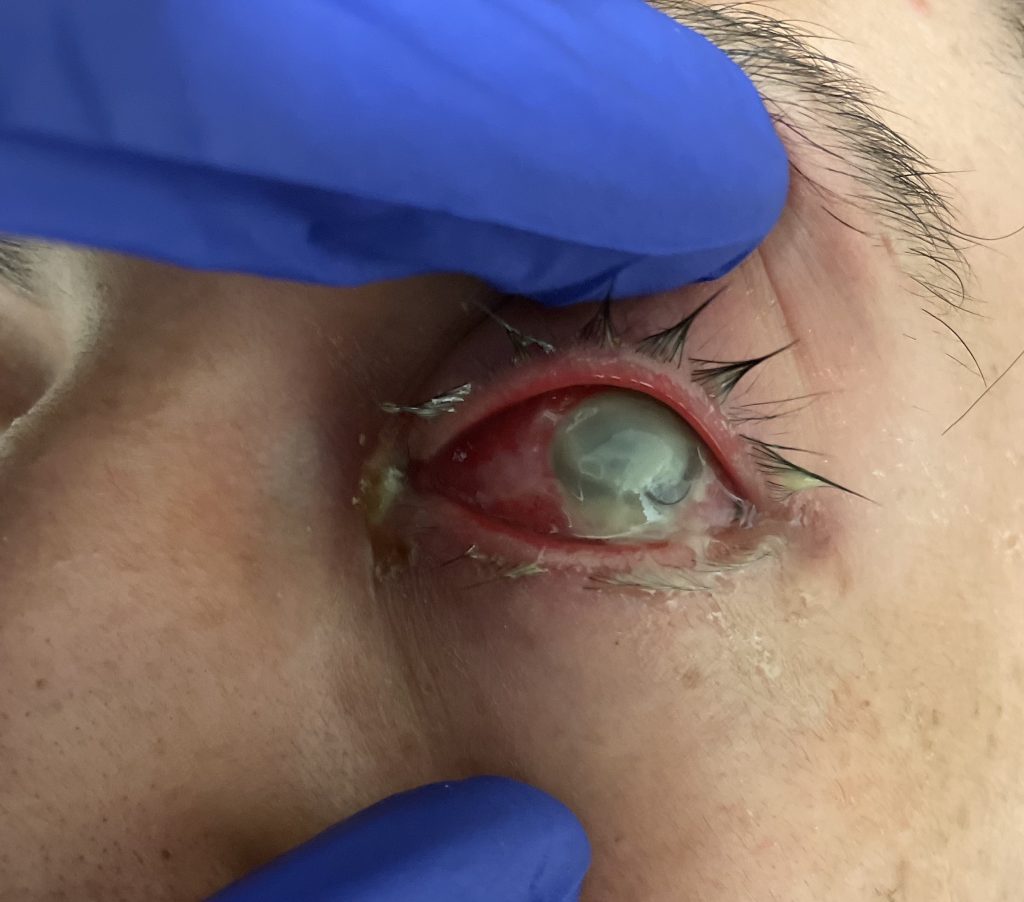As it may become very apparent, I take a lot of photos of interesting eye pathology. So what do you think is going on here? What if I told you that this had been going on for the past few days and they had been using steroid drops in the eye? No prior surgeries in this eye.

So this is a combination of a corneal ulcer leading to endophthalmitis and is a key reason we need to be very careful about using steroid drops in the eye. THEY ARE NOT BENIGN.
Endophthalmitis and Corneal Ulcers
Corneal ulcers are eye infections that lead to an open sore of the cornea. When left untreated, these can worsen to endophthalmitis which is usually an infectious process involving the vitreous and aqueous humor. It’s not a common presentation but it lets me talk about two interesting eye pathologies.
Why do we get concerned? Patients can go blind so we need a high degree of clinical suspicion. It’s important to ask patients about any and all trauma they may have experienced. Find out if they wear contact lenses or have been using any drops on their eye either given to them by a physician or someone else. In this case, the patient got a steroid drop from a friend and continued to use it for several days.
Risk factors for corneal ulcers include contact lens or traumatic lesions that become infected while risk factors for endophthalmitis include: surgery, trauma (associated with delayed laceration closure or retain foreign body), peri-ocular infections (particularly cataract surgery), immunodeficiency, diabetes, malignancy, IVDU, transplant endocarditis, chronic steroids.
Common symptoms are blurred vision, increased IOP, swollen eyelids, chemosis, conjunctival infection, hypopyon, decreased red reflex, cell and flair, proptosis, decreased EOMI. You need to have a high degree of clinical suspicion. This patient is easy to diagnose because of how striking it is, but not all patients present like this. We should also get concerned for septic patients who have eye complaints.
Common bugs are different between the separate pathologies with pseudomonas becoming more common in corneal ulcers, especially among contacts-wearers but do have some overlap with staph and strep species causing both. We also need to think about fungal infection in our immunosuppressed or corticosteroid uses. Viral etiologies including herpes simplex and zoster are also seen as well. In pediatrics, Neisseria gonorrhea can cause infection in the first 24 hours. Most endophthalmitis is caused by a bacterial infection with staph epi being the most commonly cultured bacterial.
For simple corneal ulcers (if you can call it that), topical vs systemic antibiotics should be discussed. Both are a true medical emergency and you should be getting your friendly neighborhood ophthalmologist involved. When you’ve reached the point where the vitreous and aqueous humors are infected, you need intravitreal antibiotics so you will need ophthalmology involved. Many of these patients will lose their eyes.
